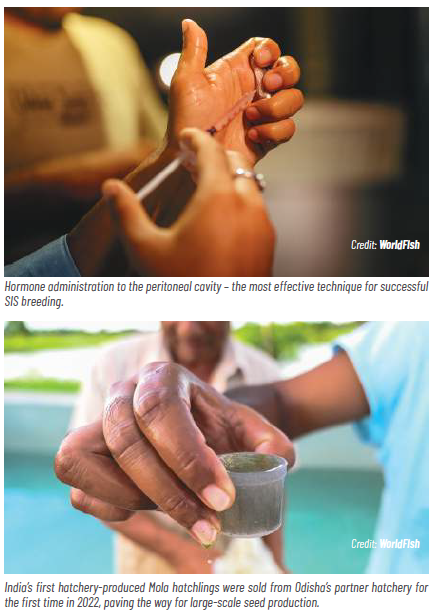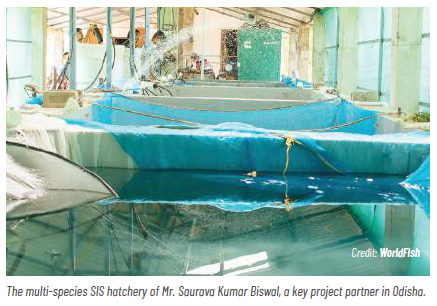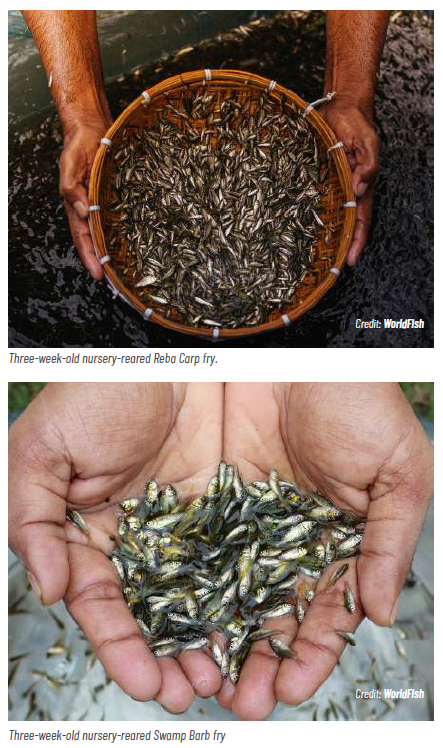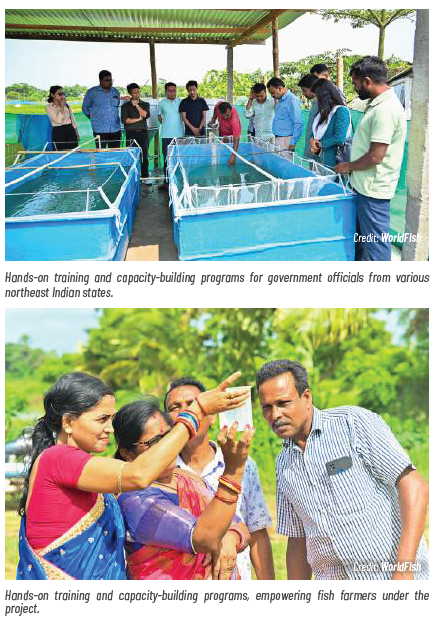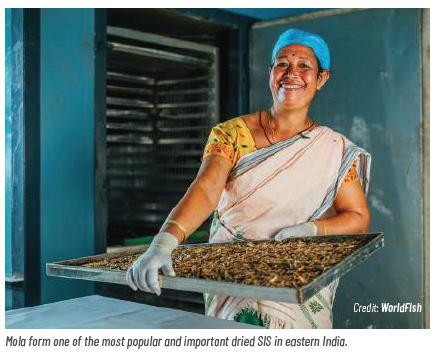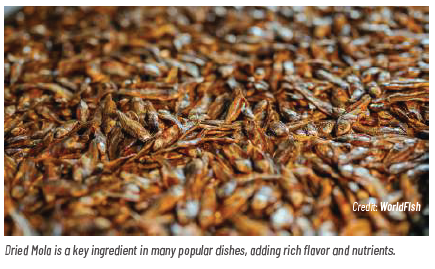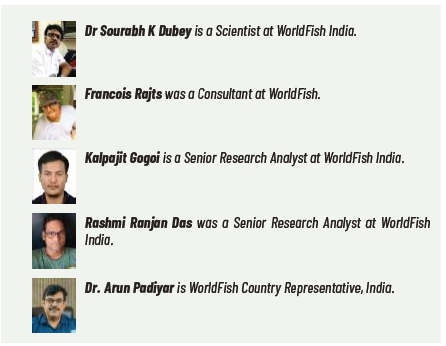Article II 6/2025 - HATCHERY-BASED MASS SEED PRODUCTION OF SMALL INDIGENOUS FISH: ADVANCING NUTRITION, LIVELIHOODS, AND FRESHWATER BIODIVERSITY
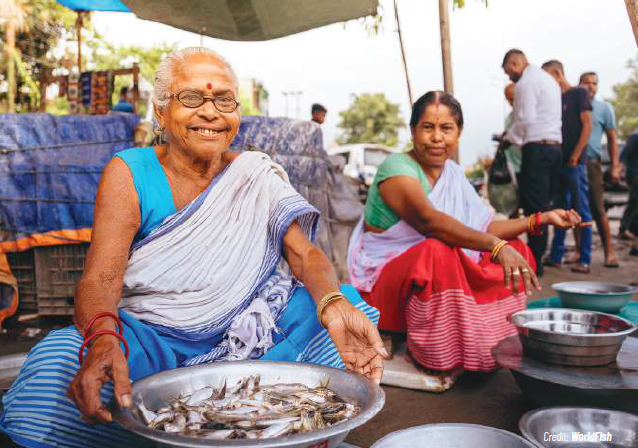
SIS are nutritional powerhouses. Species such as Mola (Amblypharyngodon mola), Pool barb (Puntius sophore), and Swamp barb (Puntius chola) Dhela (Osteobrama cotio), and Flying barb (Esomus danricus) are exceptionally rich in bioavailable vitamins (A, B12 and C) and minerals (iron, calcium, zinc, iodine and selenium). Their traditional consumption, often whole —including head, bones, and eyes— ensures maximum intake of micronutrients, enhancing their dietary value far beyond that of larger carp or tilapia.
Despite these benefits, SIS remain under-represented in global fisheries records and are often overshadowed by commercially dominant species. Their populations face accelerating decline due to habitat destruction, pesticide and fertiliser runoff, introduction of exotic species, industrial pollution, and climate variability. Once abundant and affordable, SIS are now increasingly scarce and costly, threatening both nutrition and livelihoods. Their disappearance signifies not only a cultural and ecological loss but also a critical gap in rural nutrition security.
Integrating SIS into nutrition-sensitive aquaculture systems
Empirical evidence from Bangladesh, India, and Nepal demonstrates the effectiveness of this integration. In Odisha and Assam, household ponds co-culturing carp and Mola increased access to vitamin A, calcium and iron, particularly benefiting women and children2. Importantly, these interventions are low-cost, requiring no additional feed inputs. By aligning aquaculture practices with nutritional objectives, this approach addresses malnutrition while maintaining the ecological balance of pond systems.
_________________________________________________________________
1 Dubey SK, Rajts F, Gogoi K, Das RR, Padiyar A, Belton B, Mohan CV and Bhadury P. (2024). Mass scale seed production of indigenous small fish species: A promising solution to scale nutrition-sensitive aquaculture. In Sinha A, Roy A and Gogoi P, eds. Perspectives and Applications of Indigenous Small Fish in India. Singapore: Springer Nature Singapore Pte Ltd, pp: 109-134. https://link.springer.com/ chapter/10.1007/978-981-97-1586-2_5
2 Dubey SK, Padiyar PA, Shenoy N, Gaikawad AB, Ratha BC, Mohan CV, Belton B. (2024). Scaling Community- Based Aquaculture for Enhanced Nutrition and Women’s Empowerment: Lessons from Odisha, India. Frontiers in Sustainable Food Systems, 8:1412686. https://10.3389/fsufs.2024.1412686
_________________________________________________________________
Despite these advantages, a major barrier persists: limited availability of SIS seeds. Unlike carp, tilapia and catfish, which are produced through well-established hatchery techniques, SIS seed production has historically relied on wild broodstock collection, a method that is labourintensive, ecologically disruptive, and unsustainable. Artificial breeding techniques, which revolutionised large fish production decades ago, had not been adapted for SIS, despite their superior nutritional profile. Interestingly, related small fish species are bred in the aquarium trade, indicating a largely untapped opportunity for food systems.
Scaling carp–SIS polyculture: Approaches and implementation
The project focused on Assam and Odisha, two ecologically and culturally diverse Indian states where small-scale freshwater aquaculture predominates and SIS are integral to local nutrition, culture, and livelihoods. Interventions were tailored to regional contexts, ensuring that technical innovations aligned with community practices. By establishing hatchery-based mass seed production, the project reduced dependence on wild broodstock and promoted sustainable, high-quality SIS seed for aquaculture.
Hatchery-based mass seed production of SIS: Methodologies and achievements
Producing SIS at scale required careful attention to biological and technical details. Protocols included broodstock pond preparation, harvesting and conditioning breeders, sex identification, induced breeding set-up, hormone dose, spawning, egg incubation, and harvesting hatchlings. Hormone doses were species-specific (0.5–1 ml/ kg bodyweight for females; 0.25–0.05 ml/kg for males)
____________________________________________________________
3 WorldFish (2024). Tiny Treasures, Big Impact. The Vital Role of Small Indigenous Fish in Nutrition and Livelihoods. A Photographic Sojourn of the Project “Taking Nutrition-Sensitive Carp-SIS Polyculture Technology to Scale”. New Delhi, India: WorldFish. Photo Book: 2024-88. https://hdl.handle. net/20.500.12348/6498
____________________________________________________________
Over three years, the project successfully standardised protocols for six species and produced over 52.57 million SIS seeds, equivalent to approximately 20 782 kg of surviving fry. These seeds were distributed to farmers, women’s self-help groups, cooperatives, NGOs, and research institutions, promoting widespread adoption of SIS aquaculture.
Technological and economic innovations in SIS hatcheries
______________________________________________________________
4 Rajts F, Dubey SK, Gogoi K, Das RR and Padiyar A. (2024). Small-scale alternative hatchery methods for indigenous small fish and minor carp seed production: A practical booklet. Penang, Malaysia: WorldFish. Booklet: 2024-22. https://hdl.handle.net/20.500.12348/5980
______________________________________________________________
Equally transformative was the economic model of SIS hatcheries developed to guide hatchery owners, cooperatives and policymakers5. Through detailed cost–benefit analyses, the project identified multiple entry points: integrating SIS seed production into existing carp hatcheries for an investment of around USD 5 500; establishing dedicated SIS hatcheries for USD 10 000; or setting up larger multi-species hatcheries with integrated research facilities for around USD 23 000. These models offered realistic and scalable pathways for small enterprises, cooperatives, and even public institutions to participate in the SIS value chain.
Capacity-building, training, and regional knowledge exchange
Training programs were designed to combine grassroots empowerment with high-level technical knowledge exchange, ensuring the long-term sustainability and adoption of SIS aquaculture practices. Knowledge exchange across India, Bangladesh and Cambodia enabled replication of SIS breeding protocols, facilitating a regional network of best practices.
______________________________________________________________
5 Chand BK, Dubey SK, Padiyar AP, Gaikwad AB, Das RR, Gogoi K and Rajts F. (2025). Economic analysis of the business model for mass seed production of nutrient-dense small indigenous fish species mola (Amblypharyngodon mola). Journal of the World Aquaculture Society, 56(4), e70038. https://doi.org/10.1111/ jwas.70038
______________________________________________________________
Overall, the project directly engaged 2 650 individuals, with women representing 35% of participants, which is a significant step toward inclusive, large-scale adoption of nutrition-sensitive aquaculture practices.
Policy integration and institutional adoption of SIS aquaculture
Future directions for sustainable, nutrition sensitive aquaculture
To explore more about the initiative and its transformative impact on nutrition, livelihoods, and biodiversity, visit the project6 webpage: Taking Nutrition-Sensitive Carp-SIS Polyculture Technology to Scale
Discover the project’s flagship visual products that capture its groundbreaking journey and outcomes:
Photography book: Tiny Treasures, Big Impact: The Vital Role of Small Indigenous Fish in Nutrition and Livelihoods
Project documentary: Tiny Treasures, Big Impact. The Vital Role of Small Indigenous Fish
6 This project is funded by the German Federal Ministry for Economic Cooperation and Development (BMZ), commissioned by the Deutsche Gesellschaft für Internationale Zusammenarbeit (GIZ) through the Fund International Agricultural Research (FIA).
___________________________________________________________

